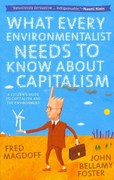Answered step by step
Verified Expert Solution
Question
1 Approved Answer
I need help solving these questions/graphs. Please use this link to answer question 5 https://www.federalreserve.gov/releases/h6/h6_technical_qa.htm and use this link https://fred.stlouisfed.org/ to answer questions 1, 6,
I need help solving these questions/graphs. Please use this link to answer question 5 https://www.federalreserve.gov/releases/h6/h6_technical_qa.htm and use this link https://fred.stlouisfed.org/ to answer questions 1, 6, and 11






Step by Step Solution
There are 3 Steps involved in it
Step: 1

Get Instant Access to Expert-Tailored Solutions
See step-by-step solutions with expert insights and AI powered tools for academic success
Step: 2

Step: 3

Ace Your Homework with AI
Get the answers you need in no time with our AI-driven, step-by-step assistance
Get Started


